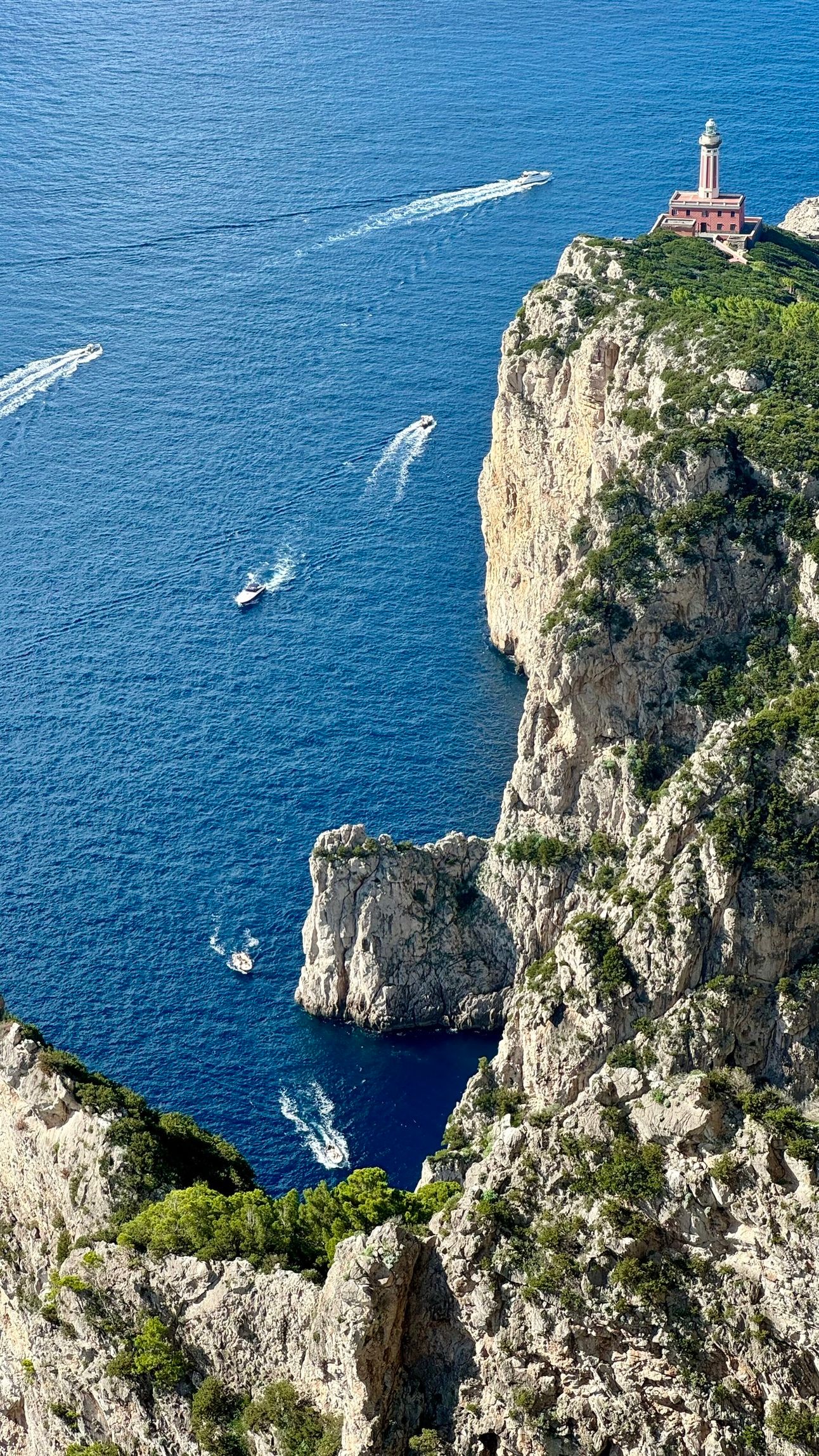
A popular destination for emperors
The island has been a famous destination since Roman times. The emperor Augustus developed the island, referring to it as “his private paradise”. His son, the emperor Tiberius, was so enamoured with the island that he became a frequent visitor and built his own retreat, Villa Jovis, spanning over 7,000 square metres. Situated on the cliff overlooking the Bay of Naples, the Sorrentine Peninsula and the neighbouring islands of Ischia and Procida, this once palatial retreat is the largest of the twelve villas built ty Tiberius. In 27 AD, he retired to Capri and never returned to Rome. He died ten years later aged 77.
A large proportion of the property remains and, after excavation work in 1937 by the archaeologist Amadeo Maiuri, the site underwent restoration in the 1990s and is now open as a tourist attraction.
The modern day fascination for Capri was initiated by a German artist and writer, August Kopisch, who wrote a book describing his stay on the island in 1826. Many writers, musicians, painters and other celebrities followed.
The glamorous decades of the 1950s and ‘60s
It was the place to see and be seen and still is! Celebrities would flock to the island for the summer including: Jackie Onassis, Grace Kelly, Prince Rainier, Sofia Loren, Brigitte Bardot, Rita Hayworth, Liz Taylor, Clark Gable and Kirk Douglas.
European fashion designer, Sonja de Lennart, born in 1920, became famous for designing the capri pant. After the war, she visited Capri. Whilst walking along the beach in a pair of long pants she had made, they got wet on the bottom. She realized they needed to be shorter and tighter, so she redesigned the pants to become the world famous capri pant. She chose the name Capri for her first collection because the island represented peace and freedom.
Audrey Hepburn and Grace Kelly were big fans of the capri pant as they became incredibly popular in the fifties and sixties.

A walker’s paradise
Only by spending a few days on this 10.4 square kilometre big slab of limestone rock that is six kilometres long and three kilometres wide at its widest point, can you appreciate the true essence of Capri.
Scala Fenicia
A long, steep stone staircase connects the port of Marina Grande with the town of Anacapri, 300 metres above. Made up of 921 steps dug out of the side of Mount Solaro, Scala Fenicia was built by Greek colonists around the 5th to 6th century BC, most likely on a pre-existing trail. Just like in other Greek towns, it connected an inhabited village by the sea with a fortress at the top for the transportation of goods.

Sentiero dei Fortini
The Path of the Forts is a spectacular walk that hugs the coastline of Anacapri from the Blue Grotto to Punta Carena, Italy’s second biggest lighthouse. Small forts are set in the rocks along the route. Built by the British for short-range artillery at the time of the Napoleonic wars in the early 1800s, they were enlarged by the French following their recapture of the island in 1808. They stand on the sites of pre-existing watchtowers for protection against the Saracen raids that long afflicted the island from the 9th century onwards.

The six kilometre walk takes you through mediterranean shrubland, sculpted rocky promontories and deep inlets. In 1998 the Anacapri municipality started restoration of the ancient forts and the paths linking them. Along the entire length of the path there are ceramic tiles telling you about the flora and fauna. It is a stunning walk and rare to see many people walking it.

Why are all the houses white?
The dazzling whiteness of Capri houses was due, in the past, to whitewash. The local limestone, roughly shaped, took the place of bricks and lime served as cement. The vaulted roofs were made waterproof by a plaster of volcanic lapilli soaked in milk of lime and pounded for three days with a large wooden spatula.
The lime was produced from the limestone rock, broken and burnt in kilns. Since marble produced a better lime than ordinary limestone, which contains impurities, the fire of the kilns devoured the ornaments of the villas of the Romans.

Perfumes of Capri
Legend tells us that in 1380, the father prior of the Carthusian Monastery of San Giacomo found out that Queen Giovanna d’Angio was coming to Capri, so he made a flower arrangement with the most beautiful flowers on the island. The water was not changed for three days and when the flowers were thrown away the prior noticed that the water had acquired a fragrance unknown to him. He went to the father alchemist who traced the scent back to the “Garofilum Silvestre Caprese”. That water became the first perfume of Capri known today as “Carthusia Perfume”.
History, on the other hand, relates that in 1948 the prior of the Monastery discovered the old formulas of the perfumes and, by permission of the Pope, revealed them to a chemist of Turin, who created the smallest laboratory in the world and called it Carthusia.
The traditional production methods used by the Carthusian monks are still in practice today. Only the highest quality products are used. After the fragrance is filtered and distilled to perfection, it is bottled and delicately wrapped by hand in beautiful packaging. The products for men contain the essence of rosemary hand-picked on Monte Solaro and the women’s fragrances contain the Capri wild carnation.
The factory is in Capri and there are showrooms in both Capri and Anacapri. Everything in the shops smell amazing!
Ci vediamo la prossima settimana.
Deb
